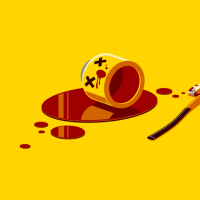Find yourself time to rest. In order to increase your productivity you need to be relaxed and in a good mood. People are often afraid to just stop and rest for a while between their daily tasks. This is however counterproductive and increases the stress which ends up with a decrease in productivity.
Stress Management Programs
Many businesses today have begun to use stress management programs for employees who are having trouble adapting to stress at the workplace or at home. Many people have spill over stress from home into their working environment. There are a couple of ways businesses today try to alleviate stress on their employees. One way is individual intervention. This starts off by monitoring the stressors in the individual. After monitoring what causes the stress, next is attacking that stressor and trying to figure out ways to alleviate them in any way. Developing social support is vital in individual intervention, being with others to help you cope has proven to be a very effective way to avoid stress. Avoiding the stressors all together is the best possible way to get rid of stress but that is very difficult to do in the workplace. Changing behavioral patterns, may in turn, help reduce some of the stress that is put on at work as well.
Employee assistance programs can include in-house counseling programs on managing stress. Evaluative research has been conducted on EAPs that teach individual stress control and inoculation techniques such as relaxation, biofeedback, and cognitive restructuring. Studies show that these programs can reduce the level of physiological arousal associated with high stress. Participants who master behavioral and cognitive stress-relief techniques report less tension, fewer sleep disturbances, and an improved ability to cope with workplace stressors.
Another way of reducing stress at work is by simply changing the workload for an employee. Some may be too overwhelmed that they have so much work to get done, or some also may have such little work that they are not sure what to do with themselves at work. Improving communications between employees also sounds like a simple approach, but it is very effective for helping reduce stress. Sometimes making the employee feel like they are a bigger part of the company, such as giving them a voice in bigger situations shows that you trust them and value their opinion. Having all the employees mesh well together is a very underlying factor which can take away much of workplace stress. If employees fit well together and feed off of each other, the chances of lots of stress is very minimal. Lastly, changing the physical qualities of the workplace may reduce stress. Changing things such as the lighting, air temperature, odor, and up to date technology.
Intervention is broken down into three steps: primary, secondary, tertiary. Primary deals with eliminating the stressors all together. Secondary deals with detecting stress and figuring out ways to cope with it and improving stress management skills. Finally, tertiary deals with recovery and rehabbing the stress all together. These three steps are usually the most effective way to deal with stress not just in the workplace, but overall.
Stress Research
A study was done on the stress levels in general practitioners and hospital consultants in 1994. Over 500 medical employees participated in this study done by Dr. R.P Caplan. These results showed that 47% of the workers scored high on their questionnaire for high levels of stress. 27% of the general practitioners even scored to be very depressed. These numbers came to a surprise to Dr. Caplan and it showed how alarming the large number of medical workers become stressed out because of their jobs. Managers stress levels were not as high as the actual practitioners themselves. An eye opening statistic showed that nearly 54% of workers suffered from anxiety while being in the hospital. Although this was a small sample size for hospitals around the world, Caplan feels this trend is probably fairly accurate across the majority of hospitals.






















Add comment